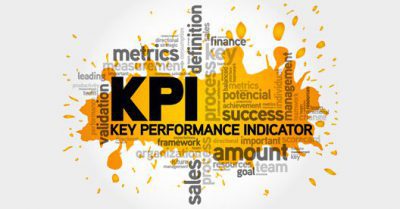 Improving maintenance performance is a common goal for every organization, but it can be challenging to determine where to begin. Key Performance Indicators (KPIs) offer a valuable solution by pinpointing areas in need of improvement within your maintenance program. By effectively tracking and measuring KPIs, you can make informed decisions, allocate resources wisely, and elevate your overall maintenance operation. In this blog post, we will explore crucial KPIs for maintenance managers and outline how to leverage them to drive better performance.
Improving maintenance performance is a common goal for every organization, but it can be challenging to determine where to begin. Key Performance Indicators (KPIs) offer a valuable solution by pinpointing areas in need of improvement within your maintenance program. By effectively tracking and measuring KPIs, you can make informed decisions, allocate resources wisely, and elevate your overall maintenance operation. In this blog post, we will explore crucial KPIs for maintenance managers and outline how to leverage them to drive better performance.
Understanding the Significance of KPIs for Maintenance Teams
Key Performance Indicators (KPIs) serve as quantifiable metrics to assess progress toward specific organizational goals. In the context of maintenance teams, KPIs are vital for evaluating performance and identifying areas that require enhancement. They enable you to measure various aspects, such as total downtime and average repair time, providing valuable insights for improvement.
KPIs can facilitate benchmarking, allowing you to compare your maintenance team’s performance against other teams within your organization or across similar organizations. Regularly tracking KPIs empowers maintenance teams to achieve their goals and continuously enhance their performance.
Key KPI Categories for Maintenance Teams
Numerous KPIs can help evaluate the performance of a maintenance team. Here are some common examples:
Downtime: This metric tracks the duration of equipment unavailability due to maintenance activities. Timely completion of scheduled maintenance helps minimize downtime.
First-time fix rate: This metric measures the percentage of maintenance issues resolved successfully on the first attempt. A high first-time fix rate indicates effective issue diagnosis and resolution by the team.
Mean time to repair (MTTR): This metric gauges the average time taken to repair equipment. A shorter MTTR suggests the team’s efficiency in completing repairs.
Leveraging CMMS Software to Track KPIs and Identify Improvement Areas
CMMS (Computerized Maintenance Management System) software can efficiently track KPIs and assist in identifying areas for improvement. By monitoring KPIs using CMMS software, maintenance teams can ensure efficient and effective service delivery.
Setting Goals and Targets using KPIs
KPIs are indispensable tools for businesses striving to enhance productivity and profitability. Setting KPIs and measuring progress against them enables companies to identify areas that require improvement and take corrective actions.
KPIs can establish clear goals and targets for individuals and teams. For instance, if a team’s KPI is to reduce downtime by 10%, they will have a precise target to strive for.
In maintenance, KPIs are frequently used in conjunction with CMMS software, enabling real-time tracking and adjustments to maintenance schedules. By leveraging KPIs to measure and improve performance, companies can achieve their goals and attain a healthier bottom line.
Tracking and Analyzing KPI Data
Maintenance managers understand the vital role maintenance plays in the smooth operation of any organization. Therefore, it is crucial to track and analyze Key Performance Indicators (KPIs) to ensure effective maintenance practices. Utilizing a CMMS proves to be one of the most effective ways to achieve this.
A CMMS allows you to track a wide range of KPIs, including maintenance costs, equipment uptime, and work order completion rates. It provides valuable insights into trends and patterns within your maintenance data. By monitoring and analyzing KPIs, you can make informed decisions to improve your maintenance operations.
Using KPIs to Enhance Maintenance Performance
Preventive maintenance is a critical component of any maintenance plan, and it is imperative to monitor maintenance performance closely. By tracking KPIs, maintenance teams gain a better understanding of the areas that require attention for performance improvement.
For example, an increase in the average number of maintenance requests per month could indicate irregularities in preventive maintenance. By tracking KPIs, maintenance managers can ensure their teams operate at peak efficiency and make necessary adjustments.
A CMMS proves invaluable in boosting maintenance performance. It helps managers track work orders, schedule preventive maintenance, and generate reports. By streamlining workflows and ensuring the timely completion of maintenance tasks, a CMMS empowers maintenance managers to achieve significant improvements.
KPIs and CMMS are essential tools for any maintenance manager aiming to enhance team performance. These tools not only identify areas requiring change but also provide a means to measure the results of those changes. Thus, they are vital for fostering continuous improvement in maintenance operations.
At eWorkOrders we understand the importance of data-driven decision-making, and we offer a free demo to help you get started. Contact us today to learn more about how our software can help your business achieve its goals.
Other Resources
Understanding MTTR, MTBF, MTTF, and Other Failure Metrics
The Guide To Mastering Maintenance Performance: Key Metrics and KPIs
Why These Warehouse KPIs Are Important For Performance & Efficiency